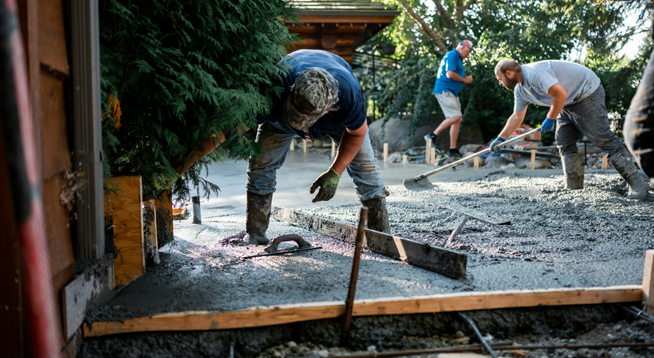The Inside Outside Guys: Slab-on-Grade Duct Systems
By Ken Calverley and Chuck Breidenstein
DETROIT, August 25, 2022 ~ When you next get the chance to go outside, I want you to find a hole in the ground that is an entrance to some critters den. Make certain the den occupants are not close by.
Carefully place your mouth and nose down to the entrance and suck in a few deep breaths.
We really do not want you to do this, but if you live in a slab-on-grade home, or SOG, or work in a similarly constructed commercial building, the air you breathe every day might well compare to what came out of that underground hidey-hole.
SOG is not a new concept. In fact, the building codes have, in the past few decades, paid further attention to residential construction using this technique.
The concept involves placing a shallow concrete foundation upon well- drained soils and constructing a building on the slab. In theory, the structure is placed such that no ground water and no surface water will affect the soils under the slab.
Water supply pipes, sewer lines and ductwork are all run underground prior to the concrete placement.
But ground settlement, ill-advised construction techniques, landscape abuse and other factors combine to make those air supply ducts a potentially dangerous source of contaminants.
Over the years, the ducts have been made of many different materials including cement pipe tarred and mortared at the joints, vitreous clay tiles, transite-cement asbestos pipe, galvanized steel, and cardboard sonotube, a thick-gauge waxed cardboard product.
Based on prior conversations we have had in this column; it is not hard to imagine condensation forming inside this system. Keep in mind that moisture is a requisite for breeding molds and bacteria, and both have a food source in the skin, hair and other organics that are drawn into the duct system.
Condensation is only one concern. The pipe is originally installed level, but during the slab pour it might experience “float-up” creating permanent low spots where water can sit. Subsequent soil settlement can also create such low spots.
Galvanized steel and cardboard often degrade over time and expose raw soils which can bring in everything from insects to mice to radon directly from the ground.
The transite-cement asbestos pipe might allow micro-particles of asbestos into your house air every time the furnace or air conditioner cycle. Tarred and mortared joints in clay and cement-based tiles eventually open up underground allowing for more contaminants.
The sewer lines in many of these older homes are cast iron which can also develop leaks. It is not unusual for this leaking sewer gas to make its way into the sub-grade duct system and further contaminate the air you breathe.
Many people living in SOG homes experience years-long allergies and respiratory issues and never discover the cause.
Hopefully you know The Guys well enough by now to realize we would not present this information to you without also offering a great solution.
Our friends at Amistee Air Duct Cleaning and Insulation in Novi discovered a product a few years ago that can resolve just about every issue we have broached in this article.
Duct Armor is a proprietary rubberized coating system that Amistee can install in those nasty ducts.
It is an anti-mold and anti-bacteria product that is water-based latex, so an owner can safely stay in the home during application and cure. The “fresh paint” smell from the install may linger for a couple of days but is safe for all inhabitants.
Steve Sprague, who oversees the Amistee technicians that install Duct Armor, enjoys sharing the reactions he hears from satisfied clients experiencing clean air and greater volumes of conditioned air that provide increased comfort in the home.
If you have been living with the contaminated air of a sub-grade duct system, talk with Steve about his product. Amistee. Another professional like all those you will find at InsideOutsideGuys.com.
For housing advice and more, listen to “The Inside Outside Guys” every Saturday and Sunday on 760 WJR, from 10 am to noon or contact us at InsideOutsideGuys.com.

